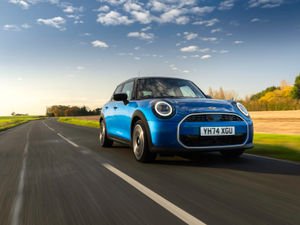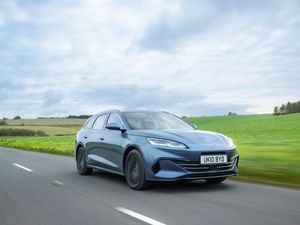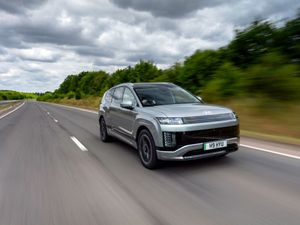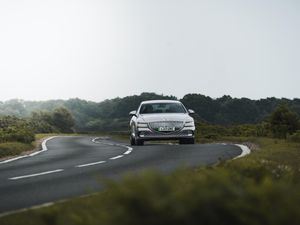Dacia Duster review: Even more 'shockingly affordable'
The Dacia Duster is now even more 'shockingly affordable' to run with the introduction of a brand new engine.
The EU6-compliant 1.6 16V 115 petrol engine improves performance, reduces fuel consumption and CO2 emissions, significantly reduces running costs and improves the towing capacity of 4x2 models.
It replaces the previous 1.6 16V 105 engine.
With its arrival, Dacia now offers a greater number of petrol-engined models in the Duster line-up.
Mid-range Ambiance 4x2 and 4x4 versions have been added, giving a more progressive and logical product line.
Previously, only entry-level Access models were offered with a petrol engine.
The new Ambiance versions are priced at £10,495 (4x2) and £12,495 (4x4). The new petrol engine is also fitted to Access versions, which are priced at £9,495 (4x2) and £11,495 (4x4).
There are also reductions in fuel consumption and emissions for Duster models powered by the dCi 110 turbodiesel engine, which now meets EU6 emissions standards. As with the new petrol engine, this has the effect of lowering the VED band of every model.
There are also improvements to the fuel economy and emissions of most models in the Sandero family and the Logan MCV with the adoption of EU6 engines.
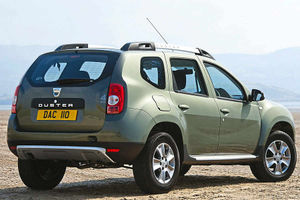
The 115hp 1.6-litre 16-valve engine is a brand new unit, not simply an EU6 version of the petrol engine previously fitted to the Duster.
It develops 10hp more than its predecessor at 5,500rpm and has an extra 8Nm of torque – now 156Nm at 4,000rpm.
This trims the 0-62mph acceleration time of 4x2 versions from 11.5 to 11 seconds, while for 4x4 models the reduction is 0.8 seconds to 12 seconds.
The top speeds rise by 1mph and 5mph respectively.
By far the greatest gains are in fuel efficiency and running costs, however.
For 4x4 versions, CO2 emissions tumble by 30g/km to 155g/km, while NEDC fuel consumption has been reduced by 6.2mpg and is now 41.5mpg.
This is sufficient to slash the annual VED cost by £170 to £180.
There are substantial gains with 4x2 models, too: CO2 falls by 20g/km to 145g/km, fuel economy improves by 4.3mpg to 44.1mpg and the yearly VED charge is £35 less at £145.
The increase in power and torque also raises the towing capacity of 4x2 versions from 1,200 to 1,500kg so that it is now on a par with that of the 4x4 versions.
Benefit-in-kind (BIK) taxation is four bands lower with all-wheel drive and two bands lower with front-wheel drive.
The new engine is a 1,598cc unit with multi-point fuel injection, driving through a five-speed manual gearbox in 4x2 models and a six-speed manual in the 4x4s. Engine stop and start is standard.
The advent of EU6 emissions controls also brings improvements in the fuel efficiency and running costs of Duster models powered by the 1.5-litre dCi 110 turbodiesel engine, which now has 20Nm more torque at 260Nm.
NEDC combined fuel consumption is now 64.2mpg (-7.7mpg) in 4x2 models and 60.1mpg (-6.8mpg) in 4x4s; CO2 emissions are down to 115g/km (-15g/km) and 123g/km (-12g/km) respectively; and every model is one band lower in the VED and BIK scales.
With the introduction of petrol-engined Ambiance models for the first time, Dacia now offers 10 versions of the Duster in a more progressive and logical range.
There are two entry-level Access models (4x2 and 4x4), both powered by the new 1.6 16V 115 engine; mid-range Ambiance trim is available with both engines and both drivelines; and at the top of the range there are Lauréate and Lauréate Prime versions, all diesel, in 4x2 and 4x4 formats.
EU6 engines also bring greater efficiency and lower runing costs to Dacia's other models in the UK – the Sandero, Sandero Stepway and Logan MCV.
The 1.2-litre 16V 75 engine in the Sandero and Logan MCV now attracts zero VED (previously £130) with a reduction in CO2 emissions from 135g/km to 130g/km. The power output is 73hp and the 107Nm of torque now peaks at a much lower 4,250rpm, improving performance. Fuel economy is unchanged at 48.7mpg.
With the 0.9-litre TCe 90 engine available in all three models, torque has risen from 135Nm to 140Nm, and stop and start is now standard. CO2 emissions are down by 7g/km to 109g/km in the Sandero and Logan MCV, and by 9g/km to 115g/km in the Stepway, while the respective fuel economy improvements are 1.2mpg to 57.7mpg, and 3.1mpg to 55.4mpg.
All three cars are also available with the popular 1.5 dCi 90, and this also needs less fuel and produces lower emissions with the switch to EU6 controls. For the Sandero and Logan MCV, economy improves from 74.3mpg to 80.7mpg, with CO2 emissions down from 99g/km to 90g/km; in the Stepway economy goes up from 70.6mpg to 74.3mpg, with CO2 down from 105g/km to 98g/km.


